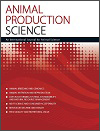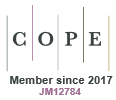AN24091Physical treatment and protease or probiotic supplementation and feather meal digestibility by broilers
Feather meal (FM) is a major by-product of the poultry industry and is potentially a valuable source of crude protein and amino acids. However, the major constraint to its use is the feather protein keratin that reduces FM digestibility. The aim of this study was to explore technologies to improve FM digestibility.
This article belongs to the Collection Sustainable Animal Agriculture for Developing Countries 2023.
AN24091 Abstract | AN24091 Full Text | AN24091PDF (296 KB) Open Access Article





